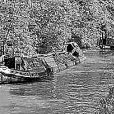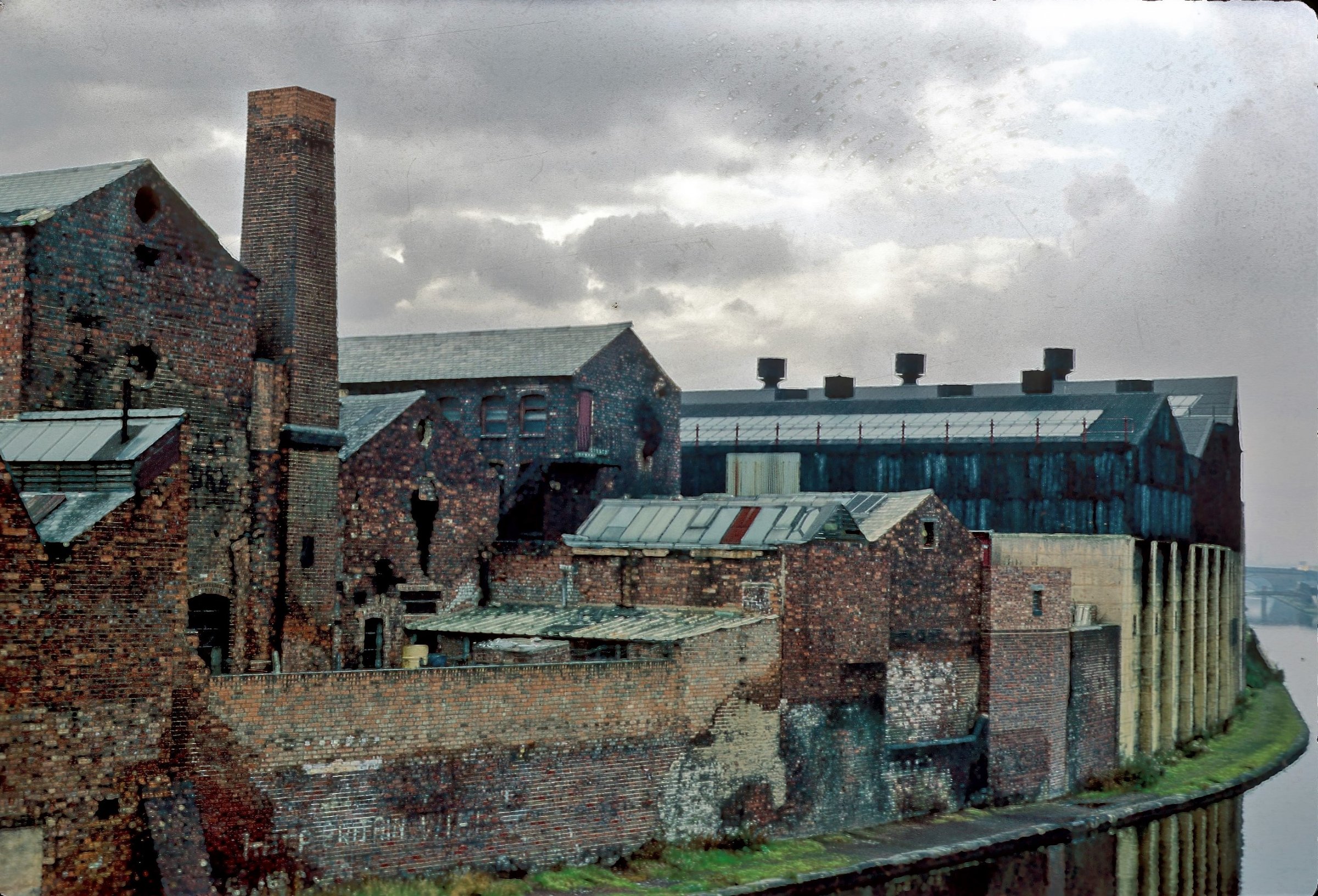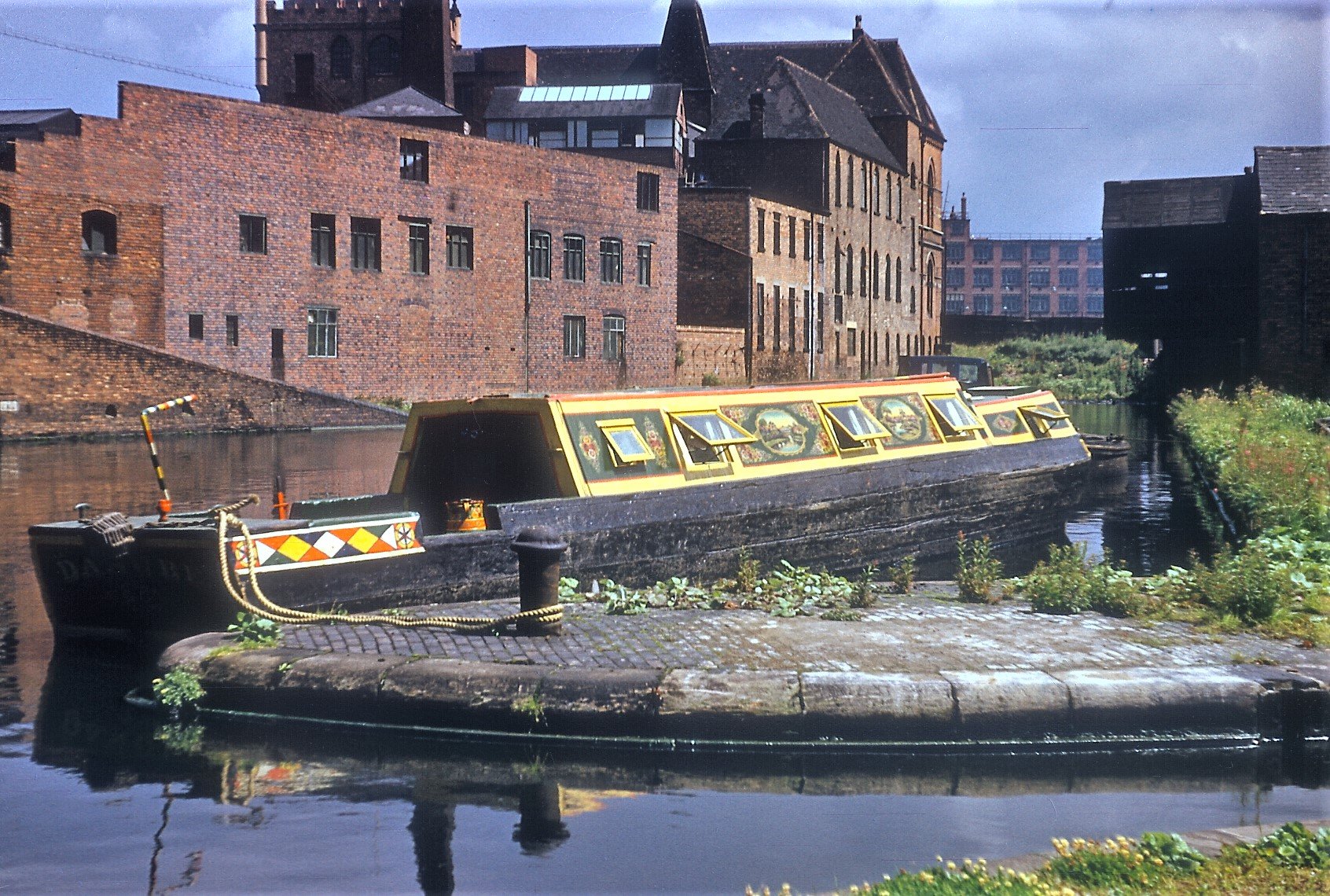-
Posts
3,397 -
Joined
-
Last visited
Content Type
Profiles
Forums
Events
Gallery
Blogs
Store
Everything posted by Heartland
-
Trent & Mersey Records being minimal, the duplication of locks is difficult to date accurately, I mentioned in Silent Highways that these were done in the 1830s. Since writing that book, I have considered the issue further. It is quite possible that this work was done gradually under the directions of Trubshaw. The fact that two locks at Pierpoint, 55 and 56 remained single, is another issue to be determined as is another at Lawton Treble. Were 55 & 56 the last of a plan to duplicate locks from both ends meeting at the Middle? The period of construction if done in house would have taken time to do and time may have run out as ownership changed later on, or the canal proprietors lost interest in further expenditure. With Lawton the issue is further complicated it appears Brindleys original triple staircase was replaced by John Rennie as three single locks and these locks 50 -52 were duplicated in the later scheme. How all the locks between Wheelock & Kidsgrove were duplicated is another question to be resolved, as records have yet to be found. The wood lined recess may have been part of the process of construction rather than an operational facet. It will be of interest what other people can say on this observation,
-

C & R T responds to Government's Clean Air Strategy consultation
Heartland replied to Ray T's topic in Waterways News & Press
it is a topical issue at present to tackle emissions from internal combustion engines and there has been a major interest in alternative modes of propulsion for the roads in order to reduce the toxic effects caused by the diesel engine and petrol engine. There are various schemes now in existence to facilitate such a change and car firms like JLR are actively making alternatives such as hybrids and electric vehicles. As to the canals, the waterways press mentions the odd boat from time to time. Compared to roads emission on canals is small, though. Boaters only have to pass under a motorway bridge, or a busy A road, to notice the pollution, both noise and fumes. May be CRT should be more active in getting such issues resolved or reduced. -
That Icknield Street is on the old Roman Road is quite possible when it is considered that roads like Hamstead Road. Monument Road and Chad Road may have also been adapted from the original road course over time. Following the route between Metchley Fort and Perry Bridge in this fashion may well produce a link. Thank you John.
-

Death By Dangerous Cycling - New Laws
Heartland replied to Alan de Enfield's topic in Fishing, Cycling and Walking
I was curious to see if Hanzard has anything reported on the changing law for cyclists prosecutions and it appears the ministers and MP's are more concerned with promoting cycling and the worthy task of preventing the deaths of cyclists on the highway. It was Patrick Scott writing in the Telegraph October 7th 2017 who noted that pedestrians seriously injured in bike accidents had doubled since 2006. Following the death of Kim Briggs in February 2017, Matt Briggs has steadfastly fought for change to the law. It is people like him that will bring the pressure on MP's in the future. Meanwhile there are few lawyers and solicitors out there who seek to represent those unlucky enough to fall victim to the actions of a careless cyclist. One website had the following statement: "Hundreds of pedestrians are injured by cyclists in the UK every year, many of them seriously, and occasionally fatally. While local government continues to encourage cycling as an environmentally friendly means of reducing congestion, the anger felt by many at the number of serious injuries sustained by pedestrians involved in collisions with bicycles was illustrated by a private members’ bill introduced in Parliament in 2011, which aimed to create a crime of causing death or serious injury through dangerous or reckless cycling. Those who would like to see legislation in this area highlight the perceived arrogance of many cyclists, and their general disregard of pedestrian safety" -

The Guardian- Jellyfish spotted in The Shropshire canal..
Heartland replied to Nunovyrbizz's topic in General Boating
The article suggests that species of freshwater jellyfish are now common outside their origins in China. It does not say how long ecologists have been aware of these jellyfish on our canals, though. -

Death By Dangerous Cycling - New Laws
Heartland replied to Alan de Enfield's topic in Fishing, Cycling and Walking
Oh Well as Fleetwood Mac once song -

Death By Dangerous Cycling - New Laws
Heartland replied to Alan de Enfield's topic in Fishing, Cycling and Walking
At the Cycle Show held at the NEC in September, there has been a facility to test ride various top of the range cycles. It is compulsory when on the track to wear a helmet at all the rides available at that show. -

Death By Dangerous Cycling - New Laws
Heartland replied to Alan de Enfield's topic in Fishing, Cycling and Walking
I believe. this forum has constantly supported the vast bulk of responsible cyclists who use the towpaths, but this legislation is about those cyclists who have caused death or serious injury on our streets. There was no suitable laws in place, as I suspect the technology improvements to cycles had not been considered previously. What has brought this law about has been a growing concern by the public over the way certain cyclists behave and the injuries to pedestrians caused by them. The tipping point, if I recall correctly, was the sad death of a woman that resulted from being knocked down by a cyclist on a fixed wheel type of cycle. His prosecution was limited by the available laws and it was that factor that led to the present legislation. It would be of interest what the CRT, and other canal owners, chose to do with the passing of this new law, if anything. Yesterday I noticed a Deliveroo Cyclist speed along the footbridge from the Sea Life Centre in Birmingham and across the Bridge to the Arena. People had to step aside to let this rogue cyclist past. Perhaps nothing will change on the towpaths until somebody is badly hurt! -
This is particularly sad news. Alan has made a considerable contribution to canal research. In particular is well known for his studies of the Grand Junction Canal and the connecting waterways. He was always an accurate correspondent and willing to share his wealth of knowledge with the intrested.
-

Easy, safe moorings in Birmingham city centre.
Heartland replied to Montgomery's topic in General Boating
The Oozells Street Loop, is not perhaps the best place to moor. I have noticed needles on the path there, by Sheepcote Street Bridge and much is now private moorings beyond up to the junction with the main line on the approach to the other Sheepcote Street Bridge. I have also seen more boats are tying up for the night between Monument Lane Interchange Basin and St Vincent Street, on the railway side of the canal. The only problem there is the cyclists, some of them accelerate to top speed on this stretch. -

Middlewich Branch breach - Shropshire Union
Heartland replied to lostnortherner's topic in General Boating
It would be of interest to know what challenges CRT have for this repair, including the extent of the damage done. Also with all the other emergency repairs going on, have CRT given priority to other jobs. 2018 has certainly created its share of infrastructure issues for CRT. Yet such problems are a regular facet of operating their network of waterways. -
Where expenditure was involved, it would seem that some of the early canal projects required the opinions of other engineers to confirm or suggest alterations. James Brindley was involved with surveying canals in Staffordshire and Derbyshire between 1758 and 1759 that was to form the basis of the eastern Trent & Mersey Canal route later. Yet John Smeaton was also requested to check these proposals that led to a revision of 1761. Whilst Brindley and Smeaton had different backgrounds, they clearly had a natural ability for choosing suitable solutions. Brindley may well have the ability to view a situation and carry out the practical aspects, but being self taught in writing, lacked the skills of putting his thoughts with a clarity that was required for publishing ideas and concepts. He was fortunately ably assisted by others in this regard. With Smeaton his education was different having a father who was an attorney. Like Brindley he had a practical ability, but having the advantage of a better education, it seems, was able to inform a wider audience of concepts and ideas. I suspect Smeatons report of 1761 on the navigation from the Potteries to Wilden was a catalyst for progressing that important work and enabled Brindley to pursue it with vigour. John Duncombe also had his work checked by William Jessop, then a respected engineer, who was engaged in a variety of projects. The engineering challenges required to put Duncombe's plan into execution were vast and in the end never finished. The line to Shrewsbury, the long tunnels and the canal to the Dee were all casualities of delay and escalating costs. Survey after survey was made before the route of today was made and opened.
-
Chicane fencing may well be a solution to the problem of speeding cyclists and at the same time a deterrent for the motor cyclist or those on quad bikes. Something needs to be done. Even if it is to educate some cyclists to get off their bikes at times and places when and where it matters. I notice the rat run on the foot path from Birmingham Museum to the Library now has a security guard getting the faster cyclists off their bikes. May be the developers there building the new structures there have had enough of those selfish enough to ride despite large signage asking cyclist to dismount in the restricted areas there.
-
This section of an engraving for the Lead Works on the Loop shows the engine house with no roads in the way. The engraving was made before 1850.
-

Canalside Market at the ICC, in Birmingham
Heartland replied to Heartland's topic in Waterways News & Press
Yes the signs were removed yesterday, but there are still reserved spaces near St Vincent Street for a heritage narrow boat and others. The way cyclists speed along this stretch any event there must have strong Health and Safety Risk assessments. -
I have now had a response from the local CRT office in Birmingham regarding the motorcycle barriers being left often. This decision was done to allow improved access for all. CRT continue to monitor these spots in case motorcycles become a nuisance. Yet there is an unwillingness to close them as when closed they are frequently vandalised. I am told there is now better signage at Edgbaston Tunnel and rumble strips have been installed there on the towpath that passes through the tunnel! No doubt the cyclists travelling fast will take notice of their speed?
-
There are notices up on the towpath reserving places for market boats to moor at the end of August. Such an event will no doubt be of interest to many who find items for sale at canalside locations elsewhere.
-
If you read the Wikepedia entry, it states the Icknield Street of Hockley was not on the course of the roman road. Icknield Street in Birmingham but the road did pass through Egbaston. The route of the "Birmingham/ Hockley" Icknield Street was swallowed up with the road improvements that created Ladywood Middleway. Icknield Port Road was essentially a road built for Canal purposes in the 1850's, as far as I can trace, It was constructed later than the Telford improvements that created the embankment across the valley and making the old line of the canal into a loop. The road (Icknield Port) provided better access, to the loop and enabled the wharf there to be developed. Gradually all the land enclosed by the loop was infilled and industry came to be established on all sides. The development has been a long time in preparation and the area is presently a graffiti ridden jungle. and hopefully will create something useful and perhaps Urban Splash will have better luck than they have with the disused pier at Weston Super Mare
-
Urban Splash, have on their website the plans for the Icknield Port Loop where the whole area around the canal will finally be transformed into their vision for the future. The wording in their proposals is both flowery and devoid of information as if their plans are yet to be finally unveiled. Calling the project Port Loop and with the use of large letters and vague statements it is a report that is almost child like. This area was Icknield Port and the development in my opinion should reflect on that heritage. This was canal land built up on the brook course that still has a subterranean culvert through the ground. It was developed for industrial use and no doubt has the various pollutants that was part and parcel of the manufacturing there. Urban Splash fall into the group of developers that like the challenge of industrial sites and have been in business for several years now. Such lands are fertile places for a certain type of redevelopment. It would be nice to think that care and consideration would be given by them when construction begins. And, hopefully this will happen. They are Manchester based and the link is: www.urbansplash.co.uk/regeneration/projects/port-loop
-
So it was Danube, thanks for that Phyllis actually died in 1969, and many of her important images of Birmingham Industry and canals were taken in the later years of her life. The next image shows the BCN curving around to the Icknield Port Loop junction at Icknield Square. Just in the far right the railway bridge that carried the Harborne Railway can be seen Some of the buildings shown belonged to Bellis & Morcam.
-
This post cannot be displayed because it is in a forum which requires at least 10 posts to view.
-
Phyllis Nicklin was a geography lecturer who died in 1960, her photographs are often a useful source of imagery for historians. There has been a project in Birmingham to retake the image location in a then an now comparison. These images are now on the display in Birmingham Central Library. There is one shot in Gas Street Basin showing a colourful narrow boat. Does anybody know the history of this craft?
-
Looking at the tunnels, there is one missing on the French Map it would be Barnton or Saltisford.
-
I do not recall a map with that detail. The CRT do publish maps on their websites, but the current changing aspects of closures and re-openings are best consulted in the notices published on the web. It would probably be difficult for CRT, Peel Ports, Environment Agency etc to arrange for a virtual map that is updated on a regular basis. Yet it is a point that they perhaps could consider for the future as app technology improves.
-
This post cannot be displayed because it is in a forum which requires at least 10 posts to view.







